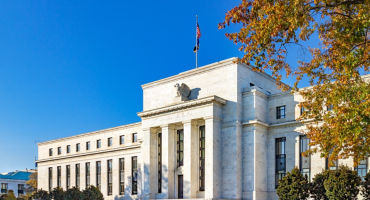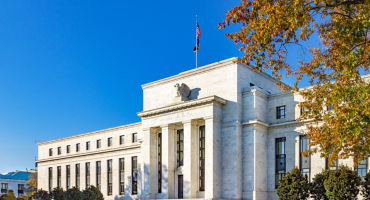- Macro Strategist
Skip to main content
- Funds
- Insights
- Capabilities
- About Us
- My Account
United States, Institutional
Changechevron_rightThank you for your registration
You will shortly receive an email with your unique link to our preference center.
The views expressed are those of the author at the time of writing. Other teams may hold different views and make different investment decisions. The value of your investment may become worth more or less than at the time of original investment. While any third-party data used is considered reliable, its accuracy is not guaranteed. For professional, institutional or accredited investors only.
US immigration, which is a top political issue in this important election year, has surged recently. In fact, the Congressional Budget Office (CBO) recently raised its net immigration projection, effectively adding seven million people to its estimate of the US population by 2026.1 The news probably went unnoticed by many, but it has meaningful economic implications.
Before I touch on those implications, let me share a few observations on the increase in immigration we’ve seen:
It is also worth noting that there’s a significant difference between the CBO’s latest immigration estimates and those of the US Census Bureau — a cumulative gap of 10 million people. In addition, while the CBO numbers peak in 2024, stronger-than-normal immigration numbers are forecast to persist through 2026.
Are the CBO estimates plausible? The answer will depend to a great extent on the outcome of this year’s election. For example, former President Trump has promised to impose significant immigration restrictions and deport undocumented workers if he’s elected.
I see a number of key takeaways for growth, interest rates, and the labor force:
Growth and interest rates — By the CBO’s estimates, the demand for goods and services driven by the addition of seven million people to the US population could add 0.2% to the nation’s economic growth rate.1 A higher potential growth rate would likely mean the US economy could sustain higher interest rates for longer. It would also allow the Federal Reserve to factor a higher “neutral interest rate” — the theoretical rate at which the economy can grow sustainably without driving inflation higher — into its policy decisions.
Labor supply — An improvement in US labor supply last year, driven in part by the surge in immigration, was a critical factor in slowing wage growth and reining in inflation. From a cyclical standpoint, if the CBO’s higher immigration estimates prove to be realistic, it would suggest that the US economy could sustain a faster pace of monthly employment gains without an unwelcome increase in inflation. A recent study by the Brookings Institution estimates that this run rate could be 160,000 – 200,000 for 2024 — as much as two times the total of 100,000 predicted by many experts.2
It’s worth remembering that while immigration results in immediate population gains, the labor supply grows with a lag, given the time needed for work permits to be issued. Once immigrants have entered the labor market, research from the Bureau of Labor Statistics shows that their labor force participation rates tend to be higher than those for the native-born population, thus serving as a positive growth factor. Irrespective of current differences in labor force projections across various sources, most experts agree that immigration will drive a large proportion of US labor force growth and, therefore, immigration policies will need to be reconsidered. As I’ve written previously, shifting demographics will prompt governments around the world to focus more on labor and investment policies in years to come, with each nation having to address unique challenges — whether to focus on higher- or lower-skilled workers, for example.
Longer term, a larger labor force could also help postpone the date at which Social Security, Medicare, and Medicaid face insolvency.
Challenges at the state level — On the negative side, many states are experiencing higher education, health care, and infrastructure costs as a result of the increase in immigration, making it a tough lift for the impacted parts of the country.
This, of course, helps explain in part why immigration is a top political issue in this election year. And the election results will, in turn, be a major driver of future outcomes. Again, the immigration and economic picture I’ve painted here seem plausible if we see a win for President Biden and the Democratic party. But if former President Trump returns to power and carries out his intention to aggressively restrict immigration and deport undocumented workers, it raises the risk of an abrupt negative labor supply shock, which would be inflationary.
1“The Budget and Economic Outlook: 2024 to 2034,” Congressional Budget Office, February 2024 | 2“New immigration estimates help make sense of the pace of employment,” Brookings Institution, March 2024
Expert

FOMC: Easing into uncertainty
Continue readingPrivate credit outlook for 2026: 5 key trends
Continue readingThe rising tide of AI: How it could lift US productivity, growth, and profits
Continue readingAre hedge funds the missing ingredient?
Continue readingRapid Fire Questions with Ross Dilkes
Continue readingInvesting in 2026: prepare for inflationary growth
Continue readingURL References
Related Insights
Stay up to date with the latest market insights and our point of view.
Thank you for your registration
You will shortly receive an email with your unique link to our preference center

FOMC: Easing into uncertainty
Fixed Income Portfolio Manager Jeremy Forster profiles the Fed's December rate cut, labor market trends, inflation pressures, and the role of anticipated changes to FOMC leaders in 2026.

Private credit outlook for 2026: 5 key trends
Our private credit experts discuss five themes driving the asset class’s 2026 outlook, including public/private convergence, changing credit profiles, the growth of retail, and much more.

The rising tide of AI: How it could lift US productivity, growth, and profits
From an economic and market standpoint, a lot is riding on the future of artificial intelligence. Macro Strategist Juhi Dhawan sees plenty of reasons for excitement but also a need for patience along the way.

Are hedge funds the missing ingredient?
Inflation, volatility, and valuations — they all raise questions about portfolio diversification and resilience. Multi-Asset Strategists Nanette Abuhoff Jacobson and Adam Berger explain why multi-strategy and equity long/short hedge funds could provide the answers. They offer insights on adding allocations to a traditional portfolio mix and a recipe for manager selection.

Monthly Market Review — October 2025
A monthly update on equity, fixed income, currency, and commodity markets.

Rapid Fire Questions with Ross Dilkes
In this edition of “Rapid Fire Questions,” fixed income portfolio manager Ross Dilkes shares his views on the Asia credit market—covering the macro outlook, China’s momentum, the most compelling opportunities across the region, and key risks shaping the next 12 months.

Investing in 2026: prepare for inflationary growth
Macro Strategists John Butler and Eoin O'Callaghan share their annual macro outlook and discuss likely implications for markets and investors. They outline four potential scenarios graded by level of probability.

Is all that glitters still gold?
Gold has delivered impressive gains thus far in 2025, but what does that say about market risks and the recent strong returns of stocks? Multi-Asset Strategist Nanette Abuhoff Jacobson offers her take on the precious metal and the case for diversification in today’s market.

Questioning US credit quality
Fixed income strategist Amar Reganti examines questions surrounding US creditworthiness.
By

Chart in Focus: Is the Fed rate cut positive for risk?
In this edition of Chart in Focus, we examine how the Fed’s long-awaited interest rate cut may influence risk assets.

Chart in Focus: Three reasons to keep the faith in US credit quality
Our fixed income experts highlight the resilience of US institutional credibility.
URL References
Related Insights
© Copyright 2025 Wellington Management Company LLP. All rights reserved. WELLINGTON MANAGEMENT ® is a registered service mark of Wellington Group Holdings LLP. For institutional or professional investors only.
Enjoying this content?
Get similar insights delivered straight to your inbox. Simply choose what you’re interested in and we’ll bring you our best research and market perspectives.
Thank you for joining our email preference center.
You’ll soon receive an email with a link to access and update your preferences.
Monthly Market Review — October 2025
Continue readingBy